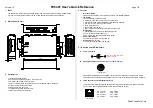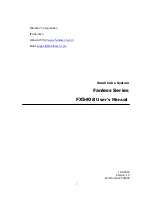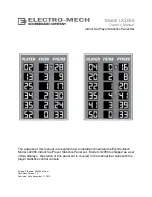
Lucent Technologies Lineage
®
2000 ECS Battery Plant H569-403
3 - 30 Engineering, Planning, and Ordering
Issue 4 February 1997
•
Additional job-specific hardware that must be ordered
•
Product manual references
•
Numbering conventions for panel positions
(10) Other tables: Other non-standard tables may appear on the
J-drawing to provide additional engineering, manufacturing
and/or installation information. Each table should be referenced
from an engineering or manufacturing note on the drawing.
(11) Change Notes: Change or Revision Notes chronicle, in
very abbreviated form, the history of drawing reissues and the
associated changes, such as additional Lists, modifications to
assembly views, clerical error corrections and part number
changes. The Issue number and date always FOLLOW the list of
changes.
T-drawings
T-drawings are used to show wiring details, such as wire colors,
gauges, and routing, which cannot be conveniently shown in
assembly views of the J-drawing. T-drawings are similar in
format to J-drawings, with cover sheets and assembly sheets.
There is no stocklist or Table A, however, on a T-drawing. The
following T-drawing cover sheet features are essentially the
same as those for J-drawings:
•
Title Block
•
Issue number
•
Sheet Index
•
Manufacturing Notes & Symbols
•
Engineering Notes
•
Change Notes
As with the J-drawing, all the notes on the T-drawing should be
read completely when engineering a job. Other important
features of the T-drawing cover sheet are Tables B, C and D.
Table B of the T-drawing gives a historical record of the addition
and elimination of options. This table corresponds to the Record
of Change Table on the SD-drawing. (See below.)
As noted earlier, there is usually a close correspondence between
options defined on the SD and those shown on the T-drawing.
The exact correlation of options and figure numbers between the
two drawings is given in Table C.
















































